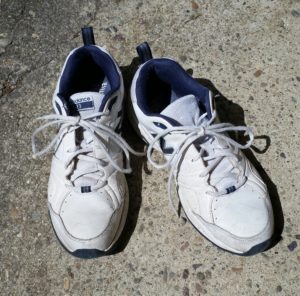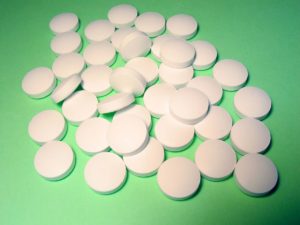 Well worth reading in its entirety. In summary: Anyone who is physically capable of activity should try to reach at least 150 minutes of physical activity per week (walking is good) and have around 20 to 30 minutes of that be vigorous activity. This significantly lowers the risk of dying prematurely. (NOTE: the second study mentioned was in the April 8, 2015 post: Physical Activity That Makes You Sweat Is Good ) From the New York Times:
Well worth reading in its entirety. In summary: Anyone who is physically capable of activity should try to reach at least 150 minutes of physical activity per week (walking is good) and have around 20 to 30 minutes of that be vigorous activity. This significantly lowers the risk of dying prematurely. (NOTE: the second study mentioned was in the April 8, 2015 post: Physical Activity That Makes You Sweat Is Good ) From the New York Times:
The Right Dose of Exercise for a Longer Life
Exercise has had a Goldilocks problem, with experts debating just how much exercise is too little, too much or just the right amount to improve health and longevity. Two new, impressively large-scale studies provide some clarity, suggesting that the ideal dose of exercise for a long life is a bit more than many of us currently believe we should get, but less than many of us might expect. The studies also found that prolonged or intense exercise is unlikely to be harmful and could add years to people’s lives.
The current broad guidelines from governmental and health organizations call for 150 minutes of moderate exercise per week to build and maintain health and fitness. But whether that amount of exercise represents the least amount that someone should do — the minimum recommended dose — or the ideal amount has not been certain.
In the broader of the two studies, researchers with the National Cancer Institute, Harvard University and other institutions gathered and pooled data about people’s exercise habits from six large, ongoing health surveys, winding up with information about more than 661,000 adults, most of them middle-aged. Using this data, the researchers stratified the adults by their weekly exercise time, from those who did not exercise at all to those who worked out for 10 times the current recommendations or more (meaning that the exercised moderately for 25 hours per week or more). Then they compared 14 years’ worth of death records for the group.
They found that, unsurprisingly, the people who did not exercise at all were at the highest risk of early death. But those who exercised a little, not meeting the recommendations but doing something, lowered their risk of premature death by 20 percent. Those who met the guidelines precisely, completing 150 minutes per week of moderate exercise, enjoyed greater longevity benefits and 31 percent less risk of dying during the 14-year period compared with those who never exercised.
The sweet spot for exercise benefits, however, came among those who tripled the recommended level of exercise, working out moderately, mostly by walking, for 450 minutes per week, or a little more than an hour per day. Those people were 39 percent less likely to die prematurely than people who never exercised. At that point, the benefits plateaued, the researchers found, but they never significantly declined. Those few individuals engaging in 10 times or more the recommended exercise dose gained about the same reduction in mortality risk as people who simply met the guidelines. They did not gain significantly more health bang for all of those additional hours spent sweating. But they also did not increase their risk of dying young.
The other new study of exercise and mortality reached a somewhat similar conclusion about intensity. {NOTE: SEE APRIL 8, 2015 POST FOR DETAILS}

 A big question for many adults is: how can one age well and live to a ripe old age? The author of the book
A big question for many adults is: how can one age well and live to a ripe old age? The author of the book  Macular degeneration is a feared condition, so this study finding a link with calcium supplements and age-related macular degeneration in those 68 and older is a bit alarming. However, it shows
Macular degeneration is a feared condition, so this study finding a link with calcium supplements and age-related macular degeneration in those 68 and older is a bit alarming. However, it shows  People are living longer these days, but the desire is to age with mental faculties intact. Thus it is great to find research that looks at how one can increase the odds of not having cognitive problems or dementia in old age.
People are living longer these days, but the desire is to age with mental faculties intact. Thus it is great to find research that looks at how one can increase the odds of not having cognitive problems or dementia in old age. Discussions of the benefits of dietary fiber seem to be everywhere this week.
Discussions of the benefits of dietary fiber seem to be everywhere this week.